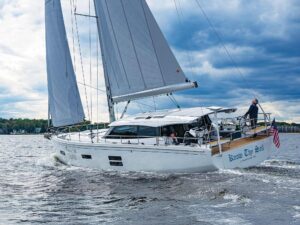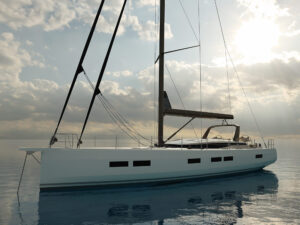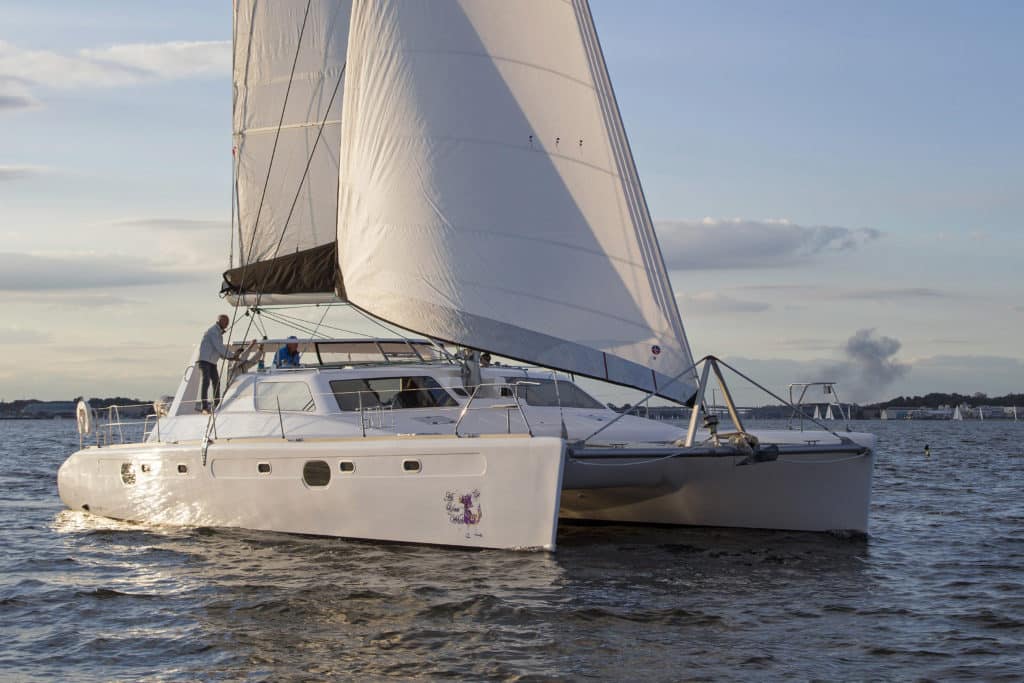
As I stepped aboard the new Voyage 480 catamaran last fall, I thought, “My, it would be easy to keep this baby looking good.” The boat had just sailed across the Atlantic to make its North American debut at the U.S. Sailboat Show in Annapolis, Maryland, and to be honest, she didn’t look a bit worse for wear.
A little pre-show washdown had left the exterior gelcoat and stainless-steel hardware gleaming. Inside, composite paneling, acrylic counters, a rugged vinyl sole, and a distinct lack of woodwork to ding up blended into a Spartan but pleasant look that would be a breeze to keep spiffy.
That’s no coincidence, as it turns out. The same company that builds Voyage catamarans in Cape Town, South Africa, manages them for owners and services them for charterers in Soper’s Hole, Tortola, in the British Virgin Islands. By design, Voyage’s cats — four models ranging from the 480 to a 60-footer — feature practical layouts and easily handled sail plans. They come packed with creature comforts and gear that make them luxurious to vacation upon — but with as little downtime as possible, so they can earn their keep.
Voyage Yachts is a family-owned company that’s been building boats since 1994 to supply Voyage Charters, which opened two years later. About 40 percent of its boats are put to work carrying vacationers, and the remainder have been sold to private owners.
Boat of the Year judge Tim Murphy began his discussion of the 480 with a few of the things he liked, including the fact that the builders “did some nice things to keep weight out of the boat,” like using cored furniture and doors.
Murphy also praised the textured gelcoat panels used in the saloon and guest cabins, as well as the mainsheet handling system, which we’ll get to in a moment.
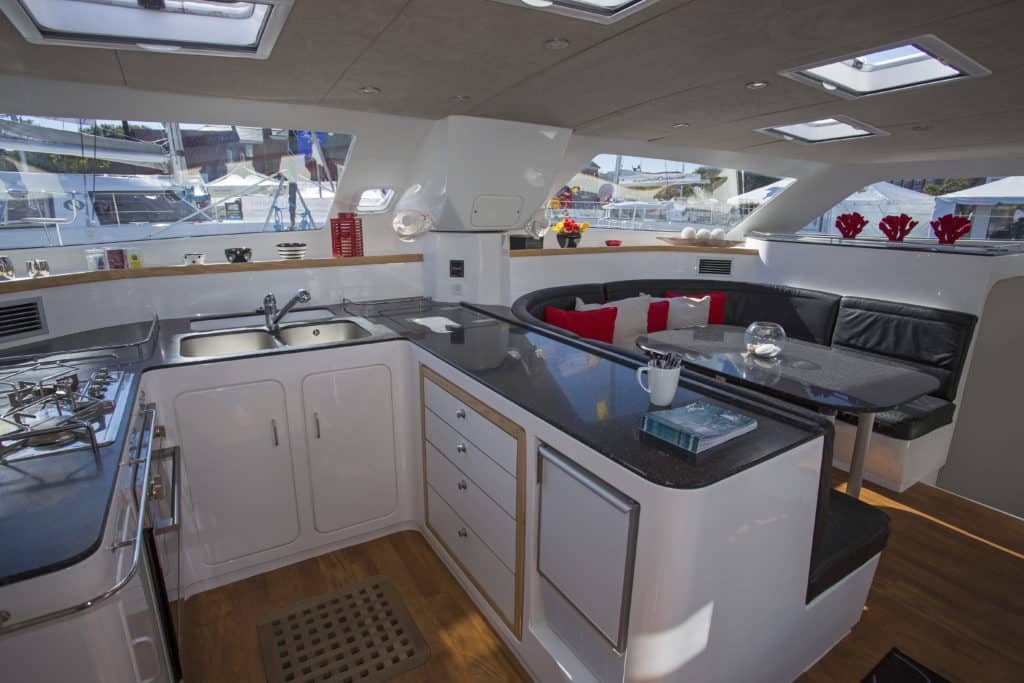
With catamarans, there’s a direct link between weight and performance. By using foam coring in the hulls, deck and cockpit bimini, and vacuum-bag construction to control the flow of resin, the builder managed to produce one of the lightest boats we looked at — a displacement/length ratio of 116, the lowest of any of the cats, and less even than the performance cruisers we test-sailed. And they did it without eliminating amenities like built-in dive-tank storage; a front-opening fridge and top-opening freezer, stove, oven, microwave, and ice maker in the galley; indoor and cockpit tables; and a hardtop bimini over the cockpit that incorporates a composite traveler arch.
On that arch are attachment points on both sides to anchor two bridles that control the mainsail. By toying with the sheets, you can dial in sail shape no matter the conditions, as well as control the boom when jibing.
The 480’s helm station is built into the starboard side of the aft bulkhead and includes a two-person helm seat. Overhead, a sliding hatch in the bimini lets you stand and see over it or view the mainsail when seated; depending on your height, you may have to try a few alternatives for a clean sightline forward. That and the camber of the side decks would take some getting used to, I think.
What would feel quite like home are the comfortable indoor living spaces. King-size berths are featured in the four-cabin, four-head-and-shower layout (a three-cabin owner’s version is also offered). Aft cabins have in-line bunks; athwartship beds are located just forward of the mast, and there’s a single bunk perfectly sized for kids in each forepeak.
All up, the charter version of the 480 is $770,000, while the base price for a private owner’s boat is $572,000; the difference in cost is attributable to the long list of options available. Bottom line, if you’re looking to either own a cat of your own or put one in charter to pay the bills, the builder can work with you to make sure you have the right Voyage for your voyage.
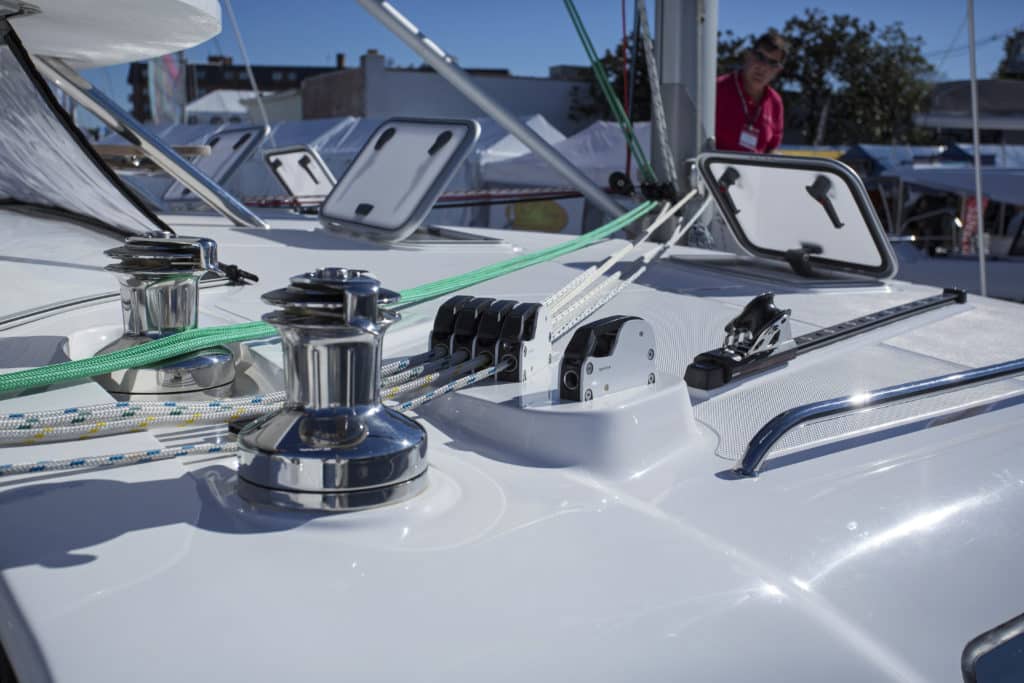
Mark Pillsbury is CW’s editor.



